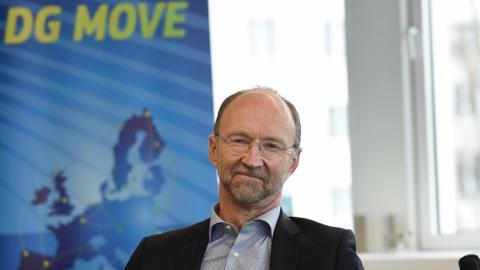
I am delighted to welcome you to the first edition of the newsletter of the new and relaunched European Road Safety Charter. The Charter is a vital element in European efforts to wake people up to the importance of road safety. It offers a fantastic, 3,500-strong network, and mobilises public and private entities as well as civil society in all EU countries and beyond. The Charter has been around since 2004 and, although we haven’t been as active as we would have liked lately (we had a gap between contractors), we’re very excited to breathe new energy into the Charter this year with the appointment of Ricardo. We want to build an even greater presence and awareness of the Charter right across Europe, and to support more cooperation and inspiration so that we can – together – take some big steps towards our European target of a 50% reduction in deaths and serious injuries by 2030.
With the relaunched European Road Safety Charter, we want to build a stronger presence at national level and increase awareness among different types of organisations and entities (such as the motor industry, research institutes, the education sector and non-governmental organisations). I encourage you to act now – reach out to organisations that you think could get involved, and form alliances at home and abroad with those with shared interests. Your actions, your monitoring of progress and your voluntary commitments to boost road safety are fundamental to achieving Vision Zero in Europe.
2020 was an incredibly difficult year for all of us. There were around 3,500 fewer road deaths compared with 2019, but this was more than might have been expected due to the lower traffic volumes that came with coronavirus (COVID-19) restrictions. One reason for this is that, as more people walked and cycled, they became vulnerable to motorists travelling at excessive speeds. I fervently hope that one of the positives to come out of this pandemic will be that temporary COVID-19 infrastructure, such as new bike lanes and pedestrianised areas, is made permanent, helping to make active mobility and the most vulnerable road users safer. And, why should we accept that road deaths go up again when the traffic returns? Governments across the world have rightly stepped in to save lives from the COVID-19 virus and we need to treat road deaths just as seriously.
This year will be a big year for road safety as the world gets moving again. Following the UN General Assembly Resolution on improving global road safety, which was agreed last August, we hope that the new UN Global Road Safety Plan will soon be published. It also has an aim of reducing road deaths and injuries by 50% by 2030. In May, the UN Road Safety Week will focus on speed management and, in particular, the importance of the 30km/hour limit mentioned in the Stockholm Declaration. We’ll have lots of activity at EU level too and plenty of opportunities to meet – virtually or, hopefully, face to face. I look forward to the EU Road Safety Results Conference and first meeting of the European Road Safety National Relays in April and to the European Road Safety Charter road safety awards in the autumn.